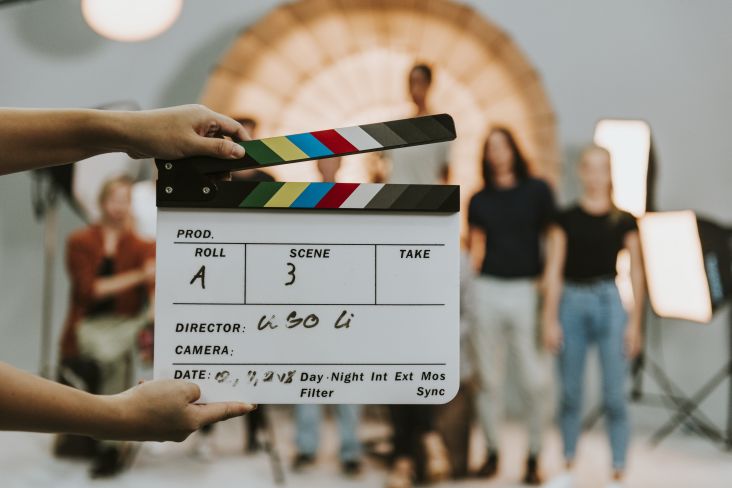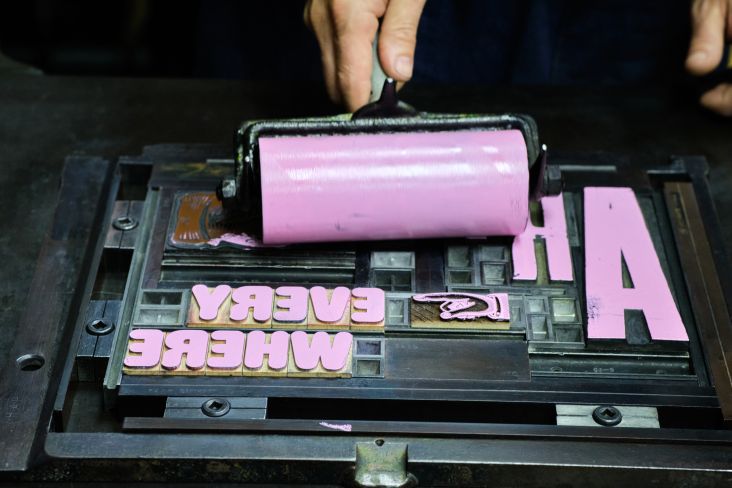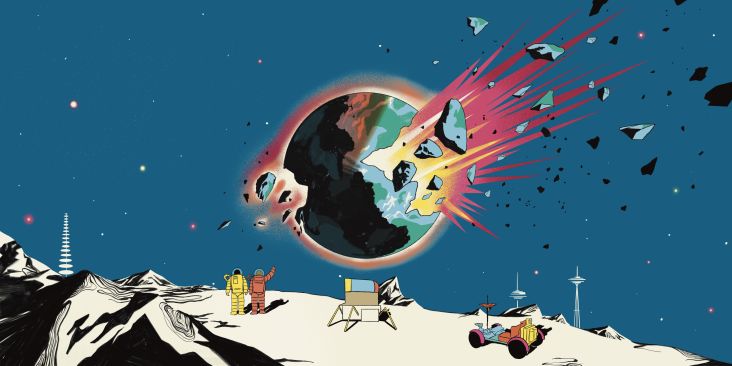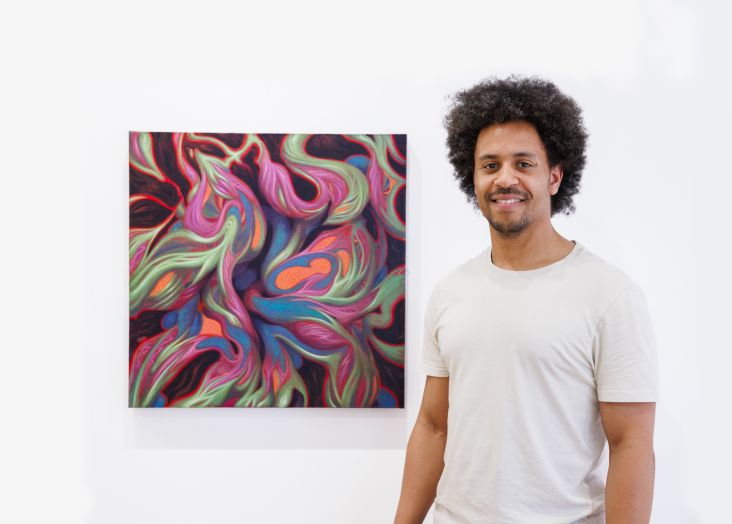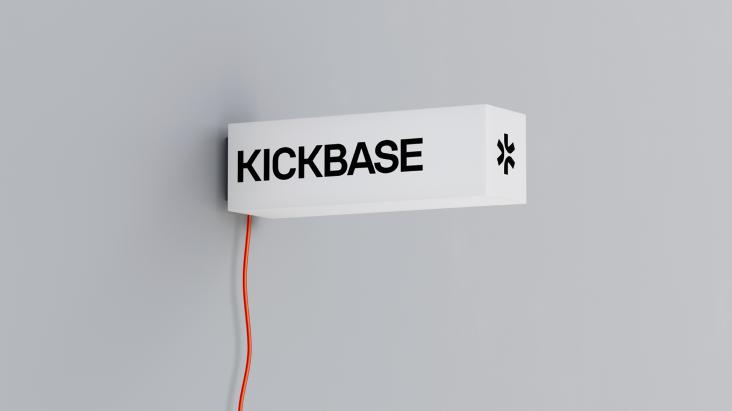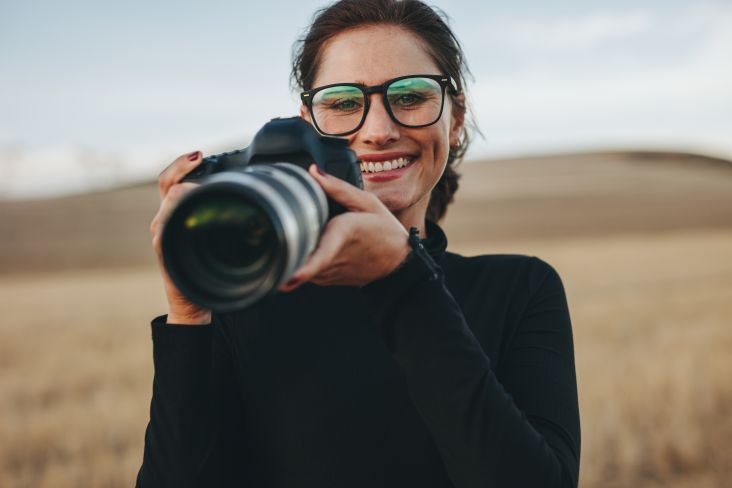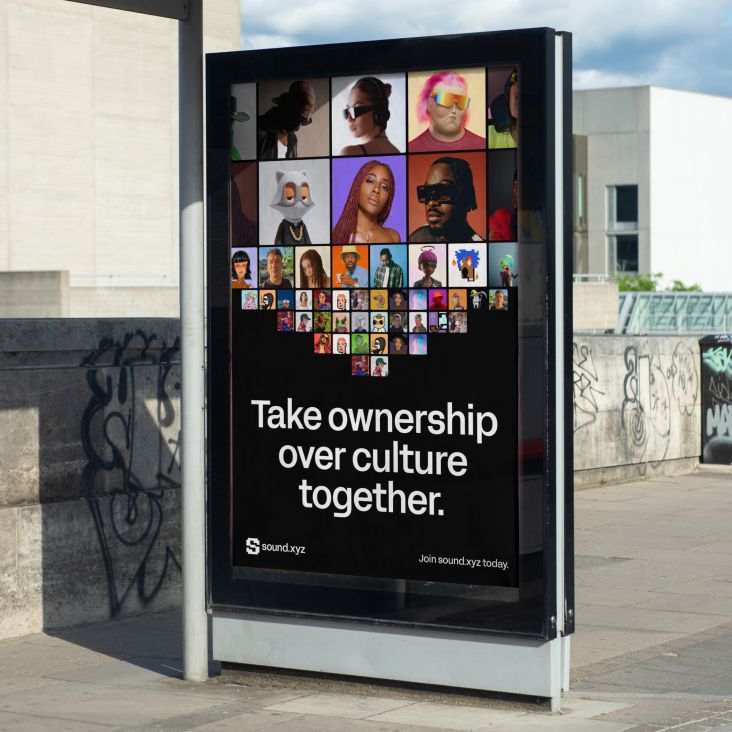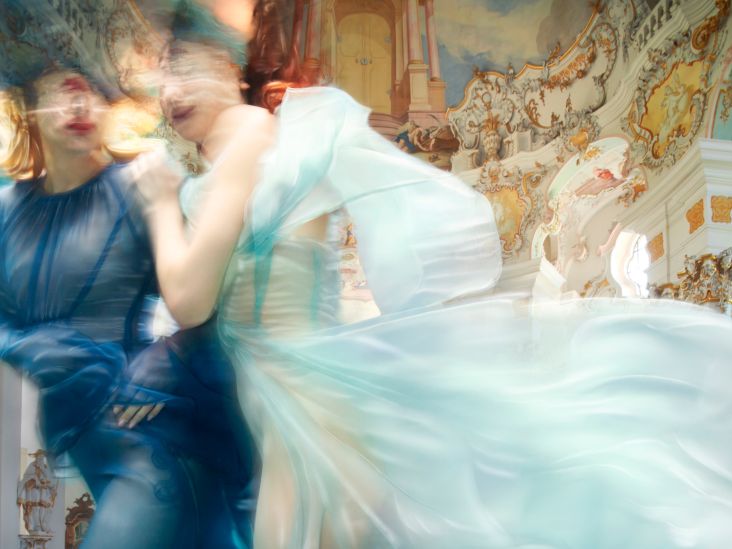Illustrator Aude Nasr captures the plurality of queer identities in Queering The Map
Since 2017, the community-generated platform Queering The Map has been charting the lives and experiences of queer people all around the world. And with the help of illustrator Aude Nasr, these stories have been brought to life via dreamy and melancholic images.
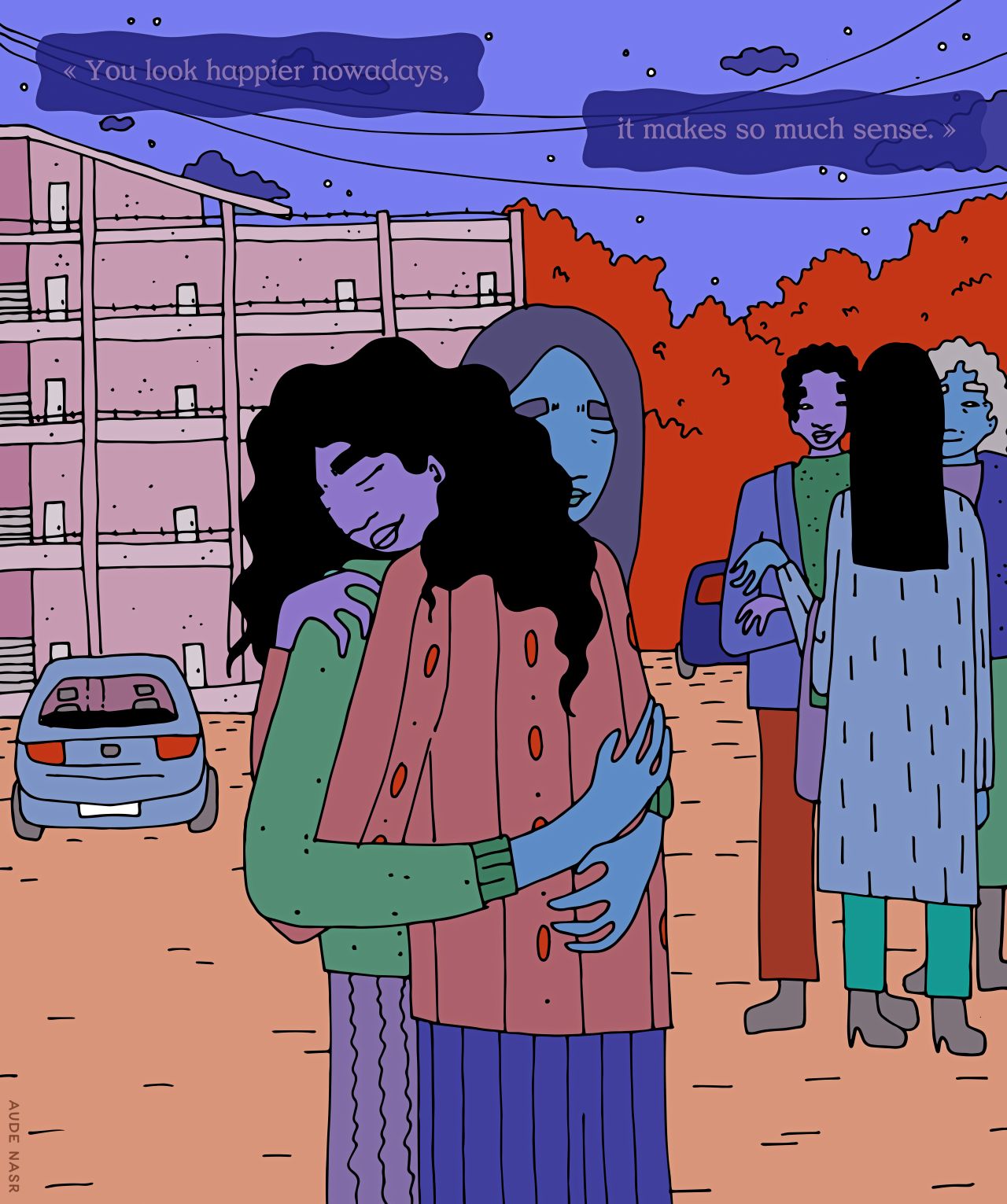
Set up by Canadian artist and designer Lucas LaRochelle, Queering The Map invites users to share their personal queer experiences, which are pinned to the relevant location on a single collective map. So far, over 80,000 submissions in 23 languages have been archived on the platform, and together they create a more diverse and representative snapshot of queer life compared to that seen in traditional media.
Illustrator Aude Nasr first became aware of Queering The Map in 2018, which she says was a time when there were less resources for queer individuals to share and read their experiences. For this reason, the project spoke to her, and a couple of years later, one of Aude's followers asked her to draw a pin based on their experiences as a lesbian.
"This took me back to the map and to the hundreds of testimonies which made me go through so many feelings," says Aude. "That's when I started drawing a couple more.
"Quite quickly, many LGBT persons sent me beautiful messages, thanked me for the drawings, and sometimes asked me to draw their pins. I've even heard from the original author of a pin I've illustrated. It was a touching conversation, and I'm grateful for the feeling of togetherness this project has brought me and others."
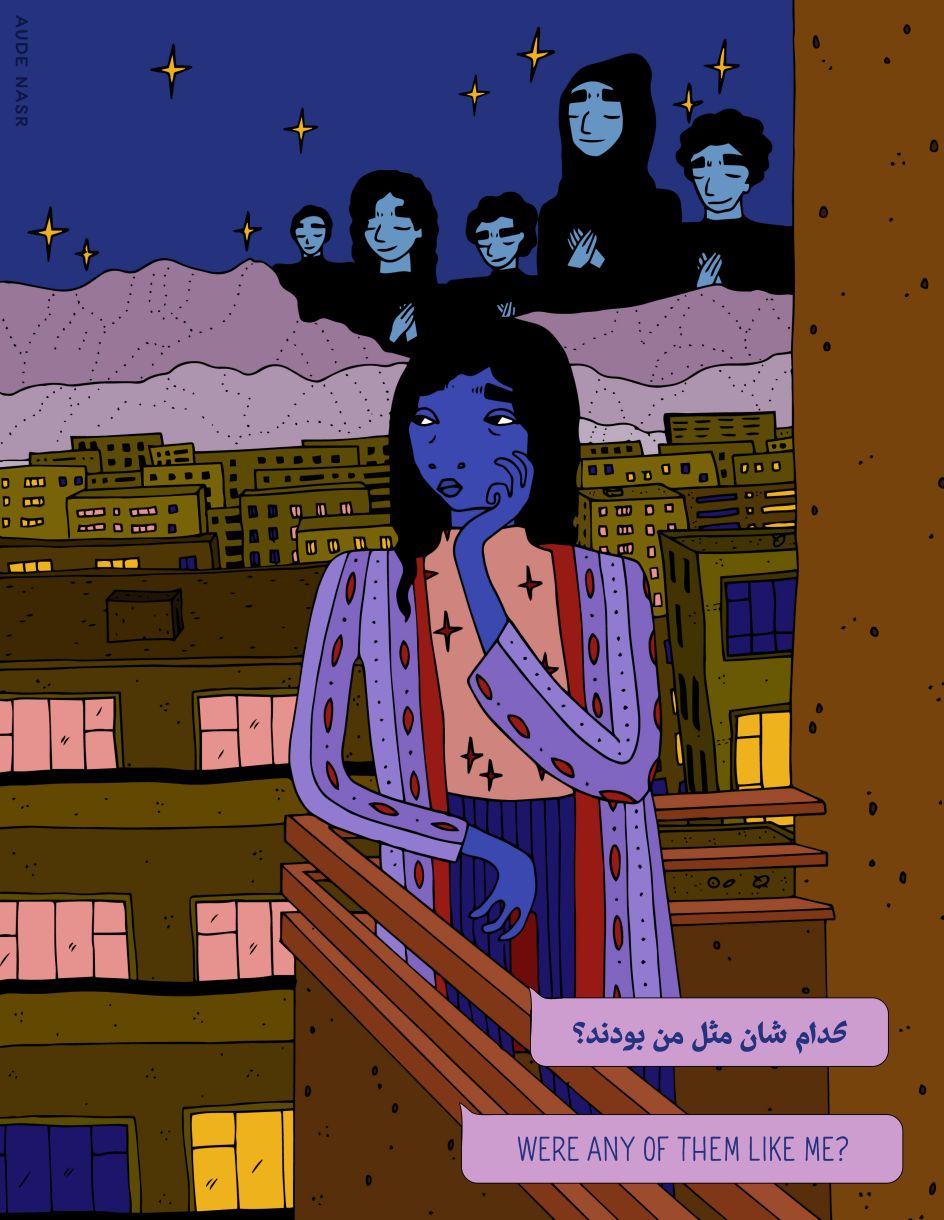
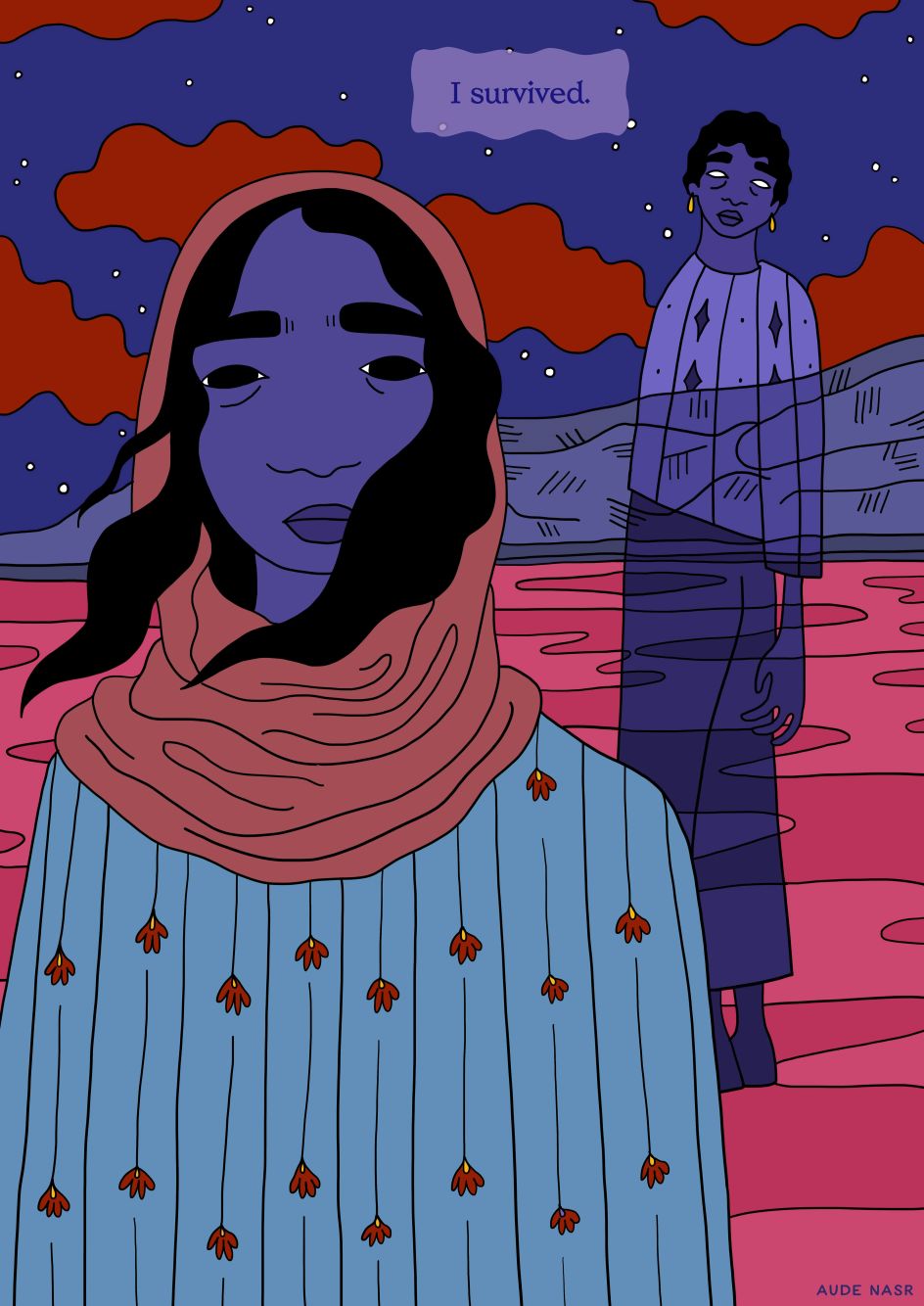
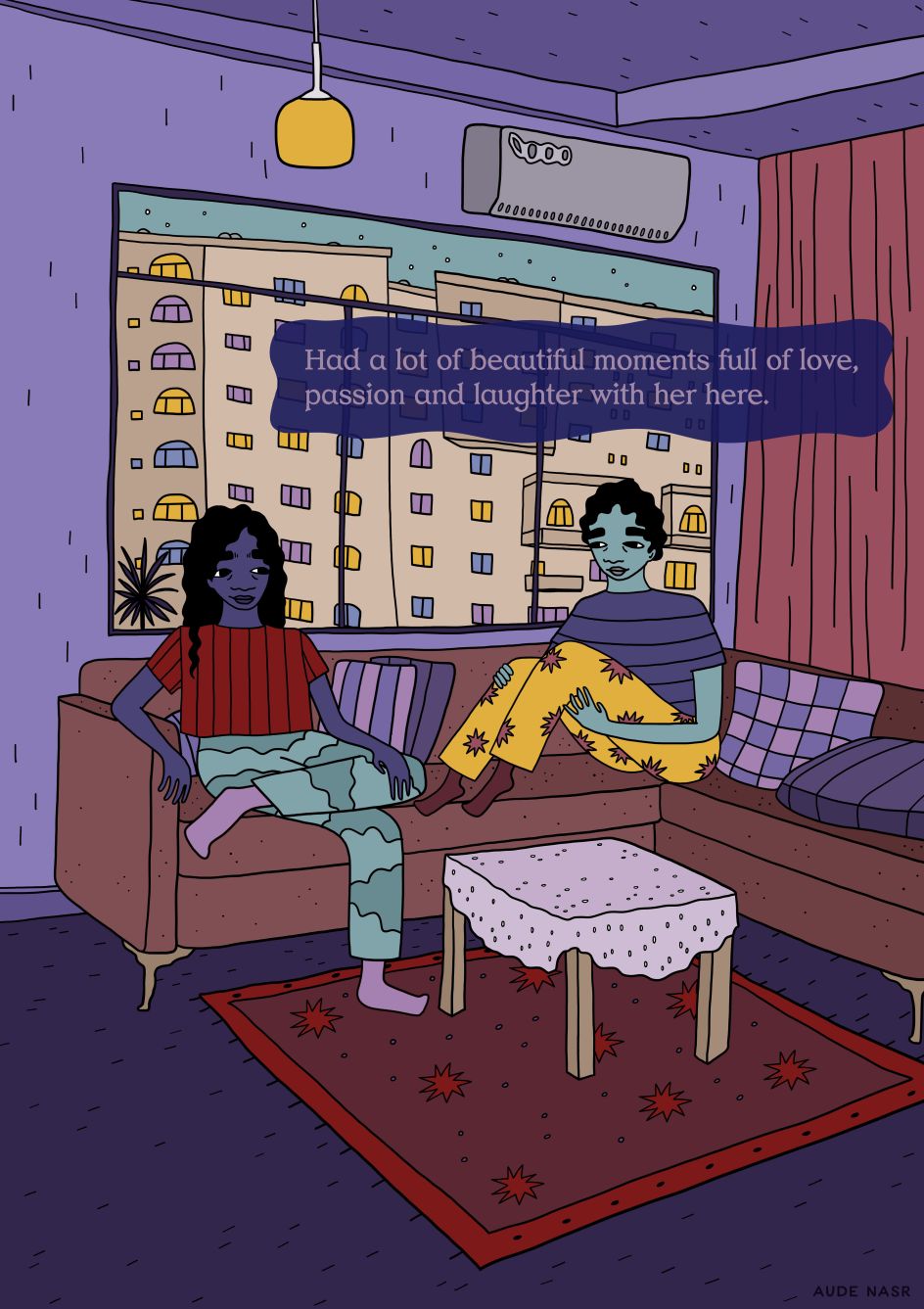
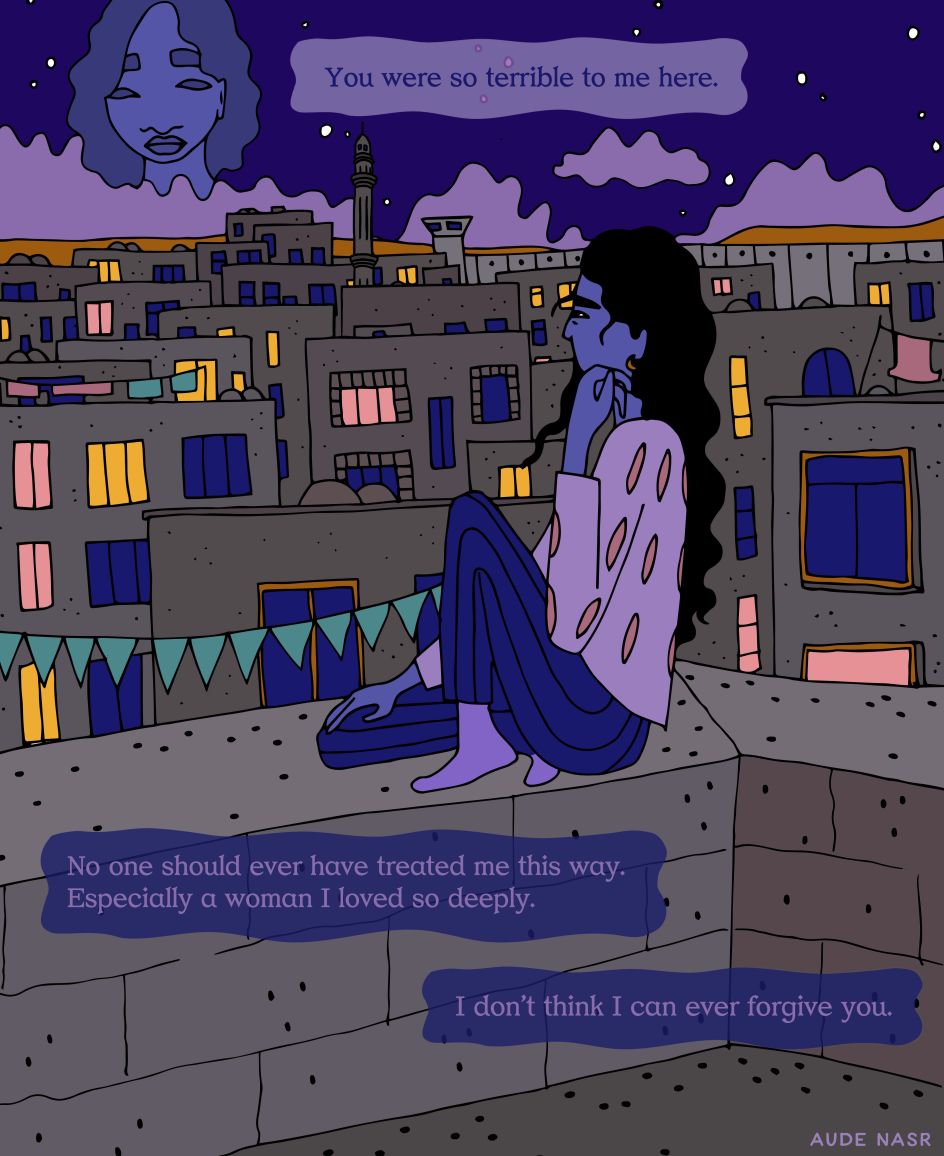
Aude was also impressed with how Queering The Map addressed the plurality of queerness. With ethnicities and cultures playing their part in the queer experience, she felt it was important to uplift narratives that exist beyond the codes of white Western queers, who she feels are over-represented in the media.
"There are so many diverse and rich queer movements and ways of being queer, not only the Western way, which focuses so much on visibility, coming out and identity," Aude explains. "People with intersex and trans realities have always existed, and so have people who engaged in same-sex relationships: everything didn't start with the queer movement as we know it now.
"Also, everything doesn't have to be about the sexuality of LGBT individuals: we have lives, thoughts, memories, doubts and dreams beyond having a different body and/or sexual orientation. Sometimes, I think the discourse can over-focus on the sexual or theoretical/academic aspects of LGBT people's existence when there are so many other layers to it. I believe my platform is a reminder of the diversity, broadness and organic nature of queer lives and communities."
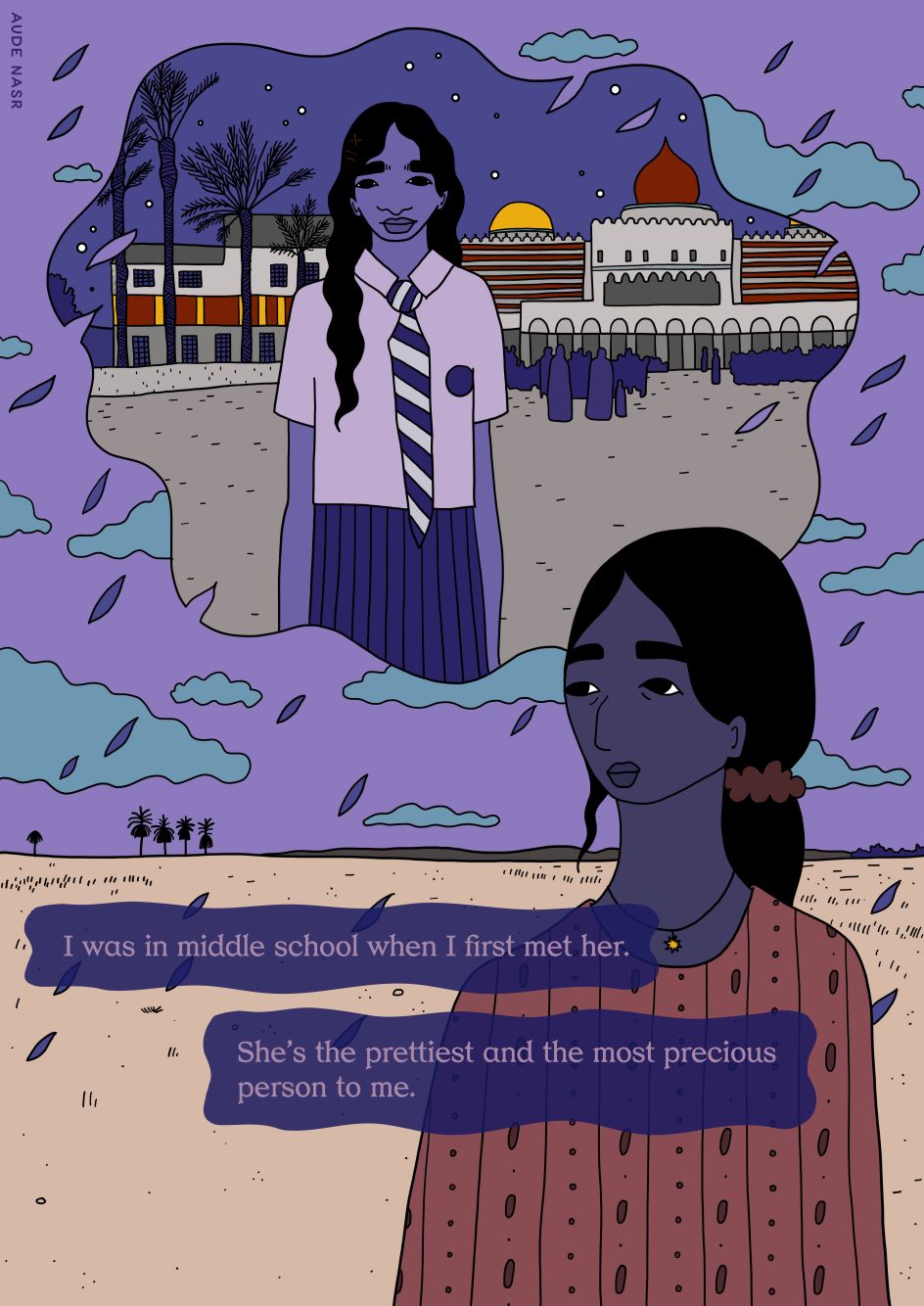
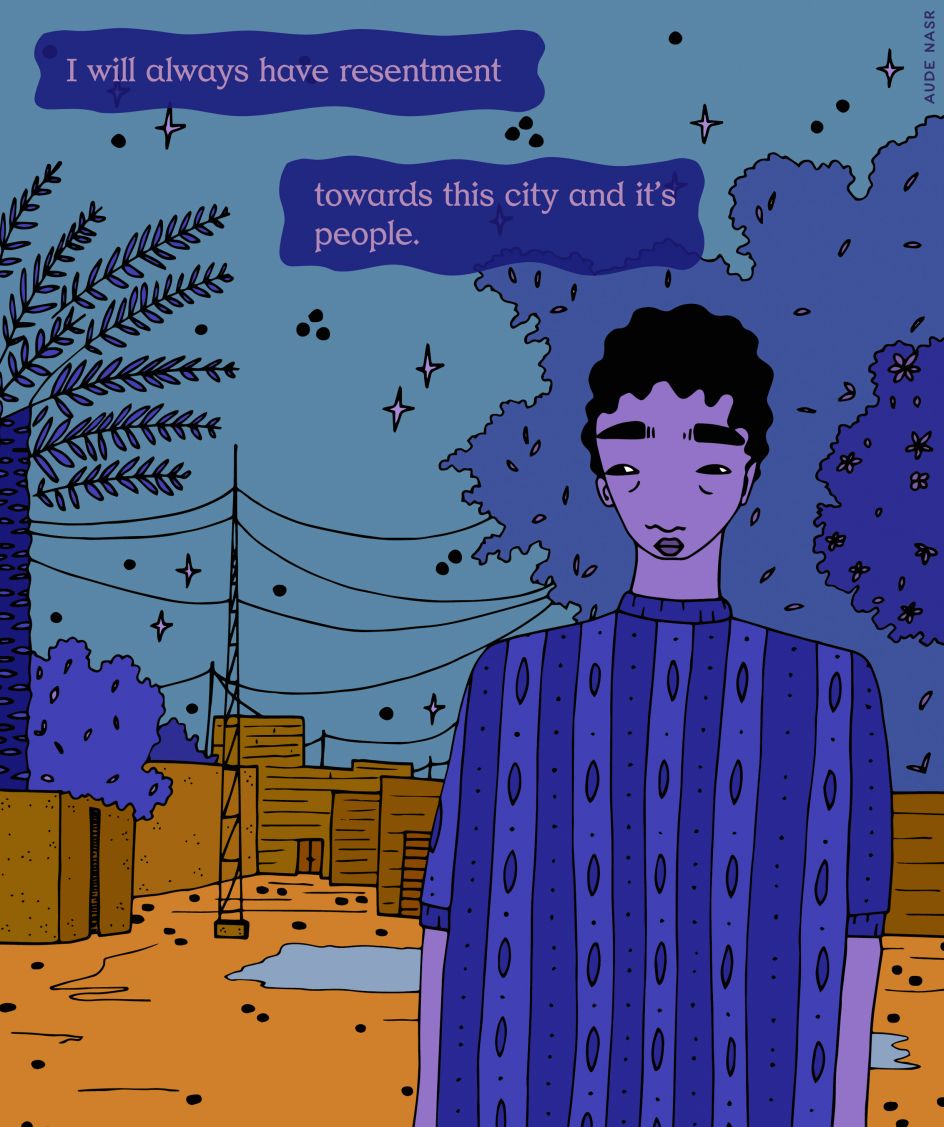
When deciding which pins to illustrate, Aude is attracted to the stories that speak to her the most. "My focus is more on the SWANA region, but I also sometimes illustrate pins from elsewhere if they move me or seem relevant in relation to the news and circulating stereotypes," she says.
"I see the project both as a way of building a community and going against the caricaturisation of certain countries when it comes to their relationship to queers. We can uplift the struggles of LGBT individuals across the world while being true to their words and experiences."
Aude feels her art style is a good fit for Queering The Map because her illustrations usually engage on a similar emotional level. And with people sharing very intimate thoughts and experiences with her, it's very important to Aude to do these testimonies justice and handle them as delicately as possible. "I also tend to draw characters by themselves, caught in their thoughts, which also comes up often in Queering The Map," she adds.
The colour palette in Aude's illustrations is a constant and effectively reflects the themes she is depicting. "I have a pretty constant palette throughout my work," she reveals. "I like drawing night scenes and solitary moments, so dark blues, purples and pinks often come up.
"The map itself is pink, and many queer people's memories are rooted in nighttime, making the process quite fluid. But I also like to sometimes step out of my usual colour tones and illustrate a day scene that contrasts with the usual palette."
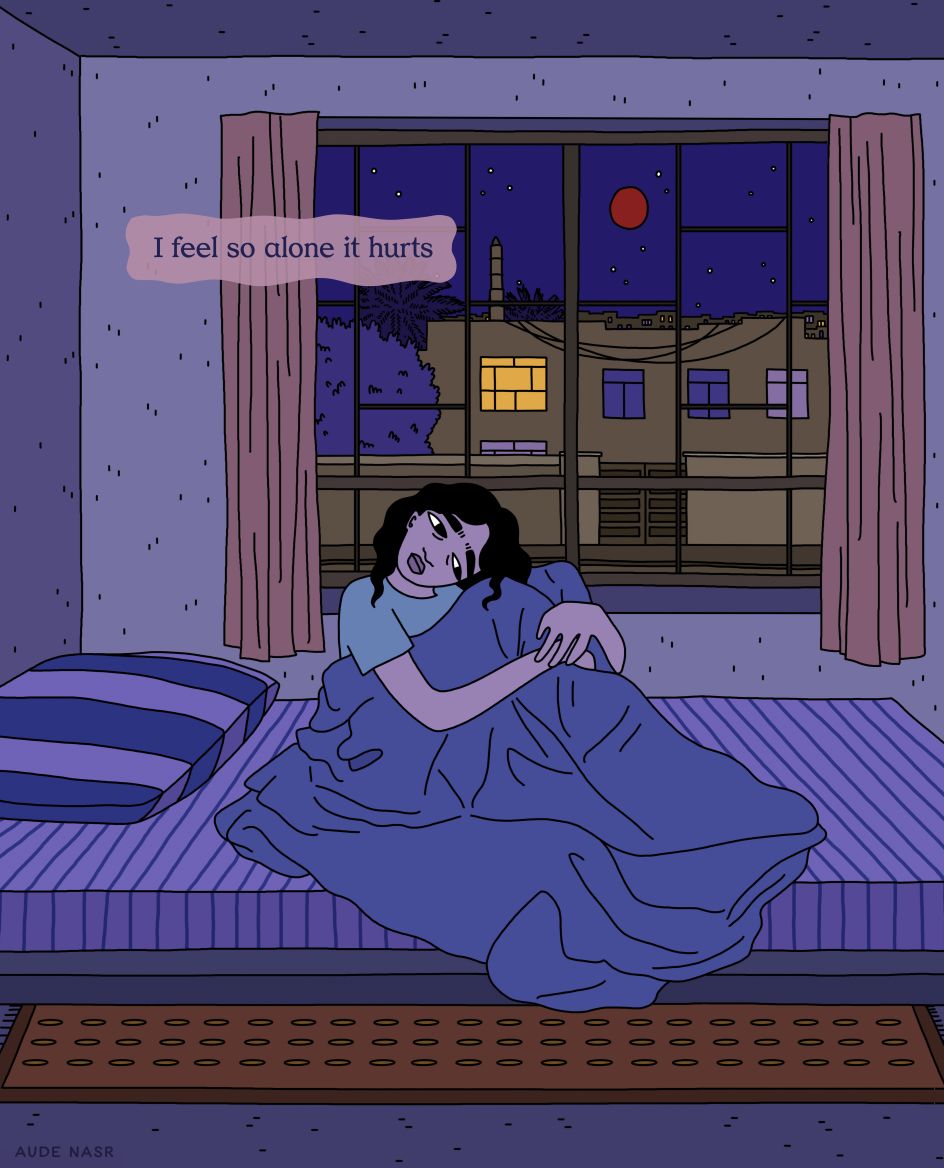
With location and culture playing an important role in the map and the testimonies, Aude researches each location to accurately capture their architecture and communities. "Some places require less research because either I know them or because the memory really focuses on the person," she says.
"But I like to introduce elements of architecture into my illustrations when a story is deeply rooted in its geographical context. I also explored this when I started working with the brilliant Jordanian magazine My Kali in early 2020. For that project, I illustrated a series of testimonials from queer people in the Middle East. So it was a similar balance between underlining the singularities and commonalities."
This research and delicacy helps Aude avoid the many cliches surrounding queer individuals in the Middle East and North Africa. And while the stories from these areas include heartbreaking and shocking details, Aude also wanted to shine a light on the "super sweet and dreamy" pins from these areas. "It's all about accepting the diversity of LGBT experiences in the region and beyond and not slamming what we expect to see on the actual testimonies," she says.
"We are lucky to have a tool like Queering The Map, where people can share their thoughts and memories directly. Their testimonies are so nuanced, it's important to honour that when drawing."
During the two years Aude has worked on Queering The Map, she has created dozens of thoughtful and insightful illustrations. Currently, she is working with Lucas on creating a printed publication of her work, and users of the platform can expect her to continue drawing many new pins in the future.

 for Creative Boom](https://www.creativeboom.com/upload/articles/06/063686a9a3b095b9b1f0e95df917ed4bd342be1b_732.jpg)



 using <a href="https://www.ohnotype.co/fonts/obviously" target="_blank">Obviously</a> by Oh No Type Co., Art Director, Brand & Creative—Spotify](https://www.creativeboom.com/upload/articles/6e/6ed31eddc26fa563f213fc76d6993dab9231ffe4_732.jpg)

 by Tüpokompanii](https://www.creativeboom.com/upload/articles/58/58684538770fb5b428dc1882f7a732f153500153_732.jpg)

 for Creative Boom](https://www.creativeboom.com/upload/articles/6b/6bdcef9e04aaf7aab6f3ceb2ed11fdf8a67b8870_732.jpg)





